In recent weeks, the price of XLM has been stuck in a sideways trend. However, it is now in a state ready to break out of the current trend. At the time of writing, the price of XLM has risen over 11% in the past 24 hours, confirming a breakout from the bullish flag pattern. After a long period of consolidation, XLM may be poised to rise higher, with a target that could reach $1.00, if key technical indicators continue to show strength.
From liquidation setups to increased buying pressure and positive sentiment from retail investors, all signs point to a potential upcoming rally. However, one on-chain indicator still shows risks that need to be monitored.
XLM aims for a 133% increase as it breaks out of the bullish flag pattern.
The price of XLM has broken out of the classic bullish flag pattern. In technical analysis, a flag pattern forms when the price rises sharply (pole), then consolidates within a descending range (flag), before continuing to break out in the same direction.
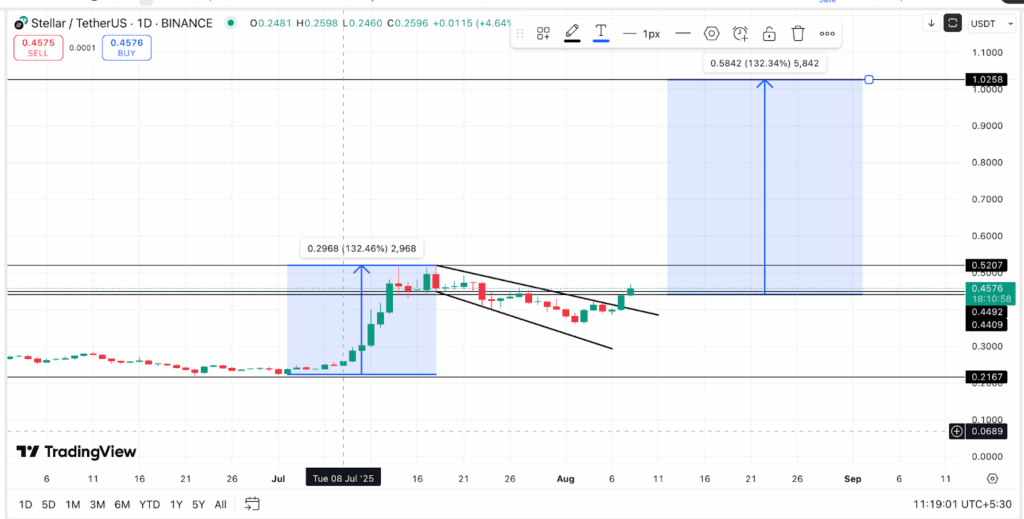
The price chart of XLM shows the height of the initial flagpole, from about $0.23 to $0.52, corresponding to an increase of about 133%. The new target is aimed at the important psychological level of $1, determined based on this height from the breakout zone.
This structure often indicates strong interest from the market and sustainable buying. The breakout candle has been supported by high trading volume and is currently surpassing short-term resistance near $0.46.
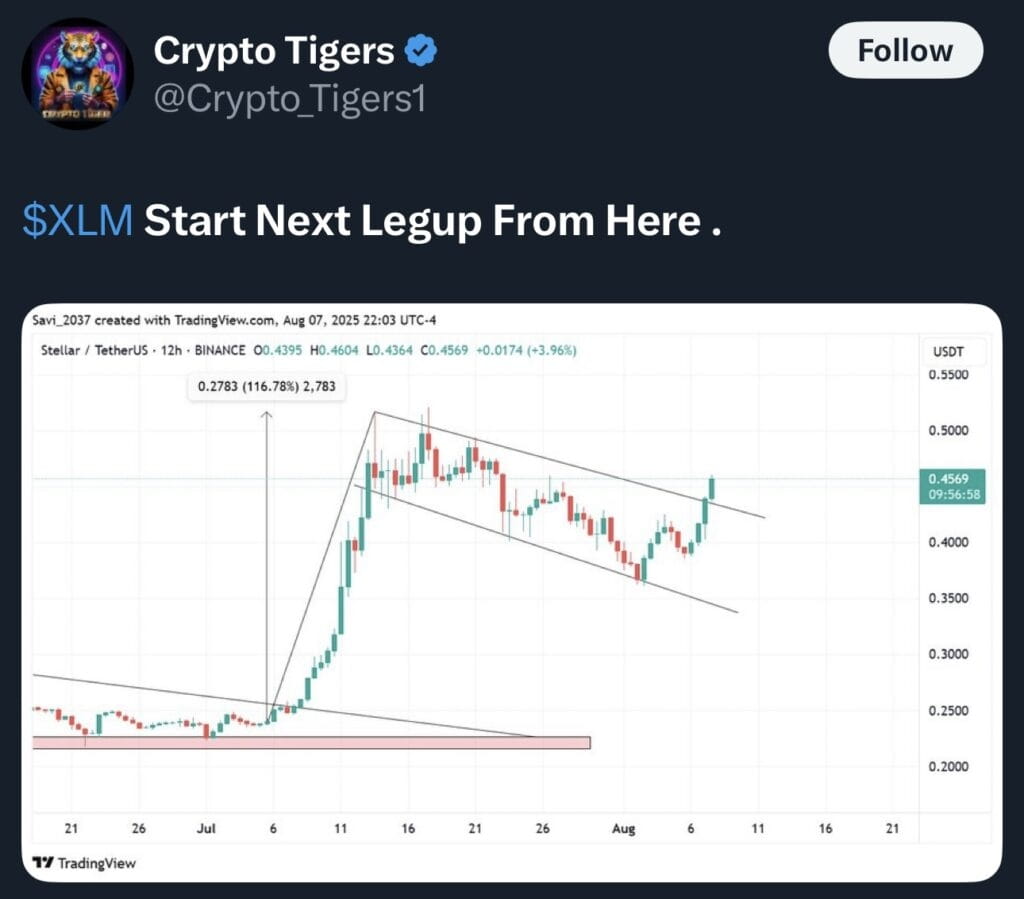
To confirm the bullish move, the first step needs to surpass the $0.52 level. Note that this analysis aligns with assessments from experts on platform X.
The Short Squeeze situation may continue with over $60 million in short positions still open.
According to the latest liquidation map, many short positions have been wiped out, but over $52 million in short positions for XLM are still active on the Bitget exchange. This is the impetus for the next price surge.
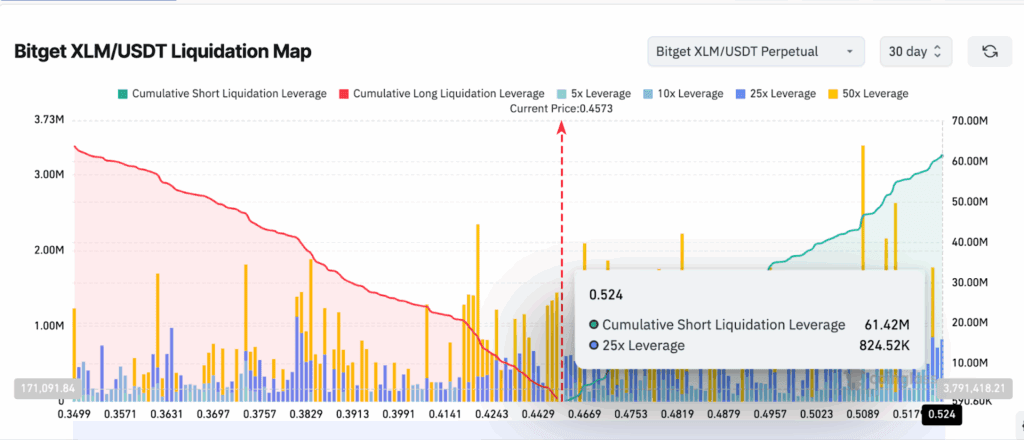
As the price of XLM rises rapidly, investors betting on a decline (short positions) are forced to buy back their positions, which further pushes the price higher. This phenomenon is known as a short squeeze, and it has helped XRP rise recently; Stellar may be the next coin.
If the bulls maintain pressure and buying volume increases, XLM could trigger another liquidation cluster, potentially helping the price reach $0.52 and higher. Notably, the peak of the short liquidation cluster is at $0.52, which is also the level mentioned on the price chart.
OBV and the Bull-Bear Power index confirm growth momentum.
The On-Balance Volume (OBV) is rising again, creating higher levels alongside the price. This is a positive signal for the price of XLM. OBV tracks total trading volume, adding volume on up days and subtracting on down days. An increase in OBV along with price indicates that demand is rising.
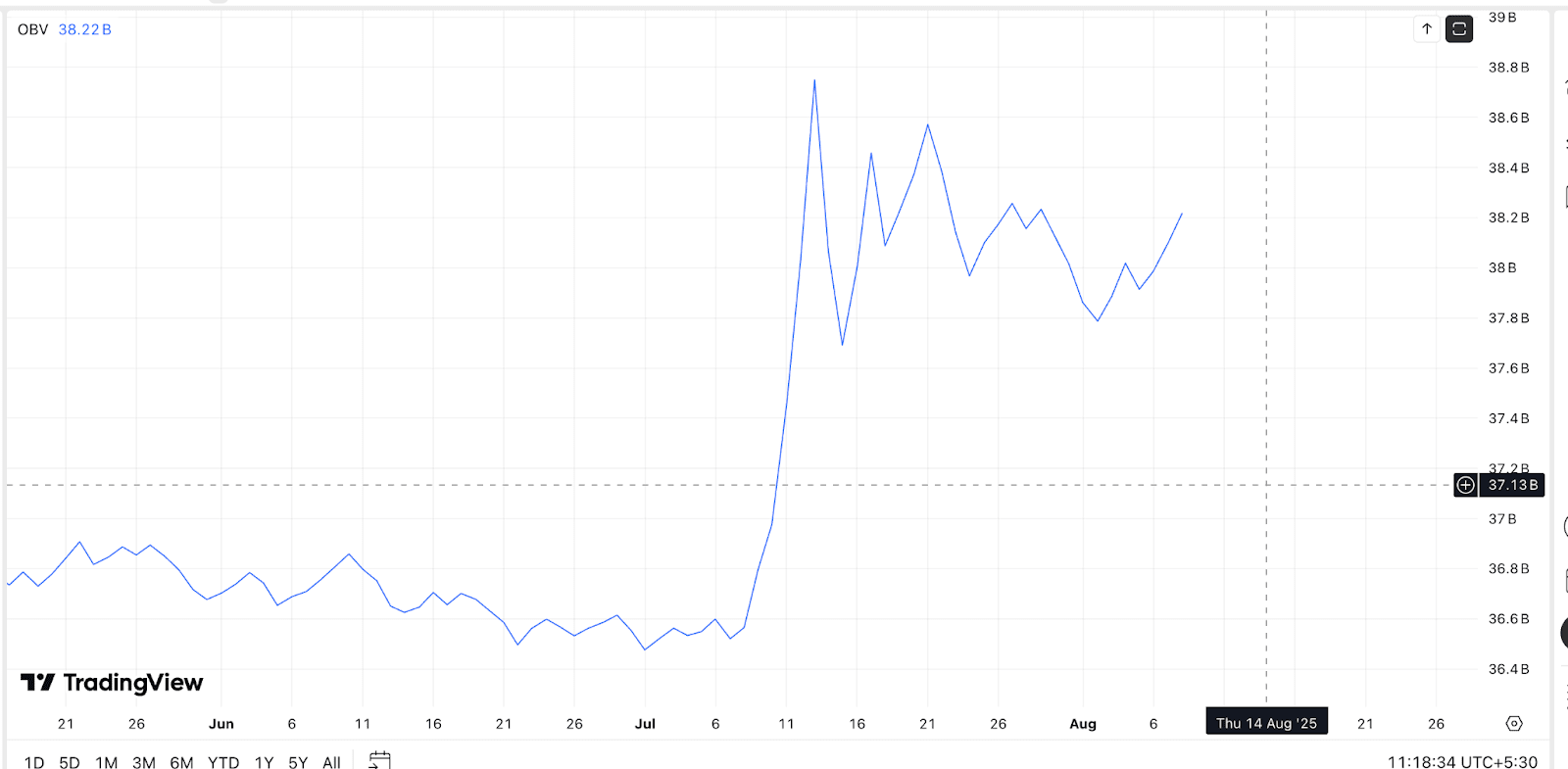
The Bull-Bear Power (BBP) index is currently showing green, indicating that buying power is dominating. This index measures the difference between the highest price buyers are willing to pay and the lowest price sellers are willing to accept.
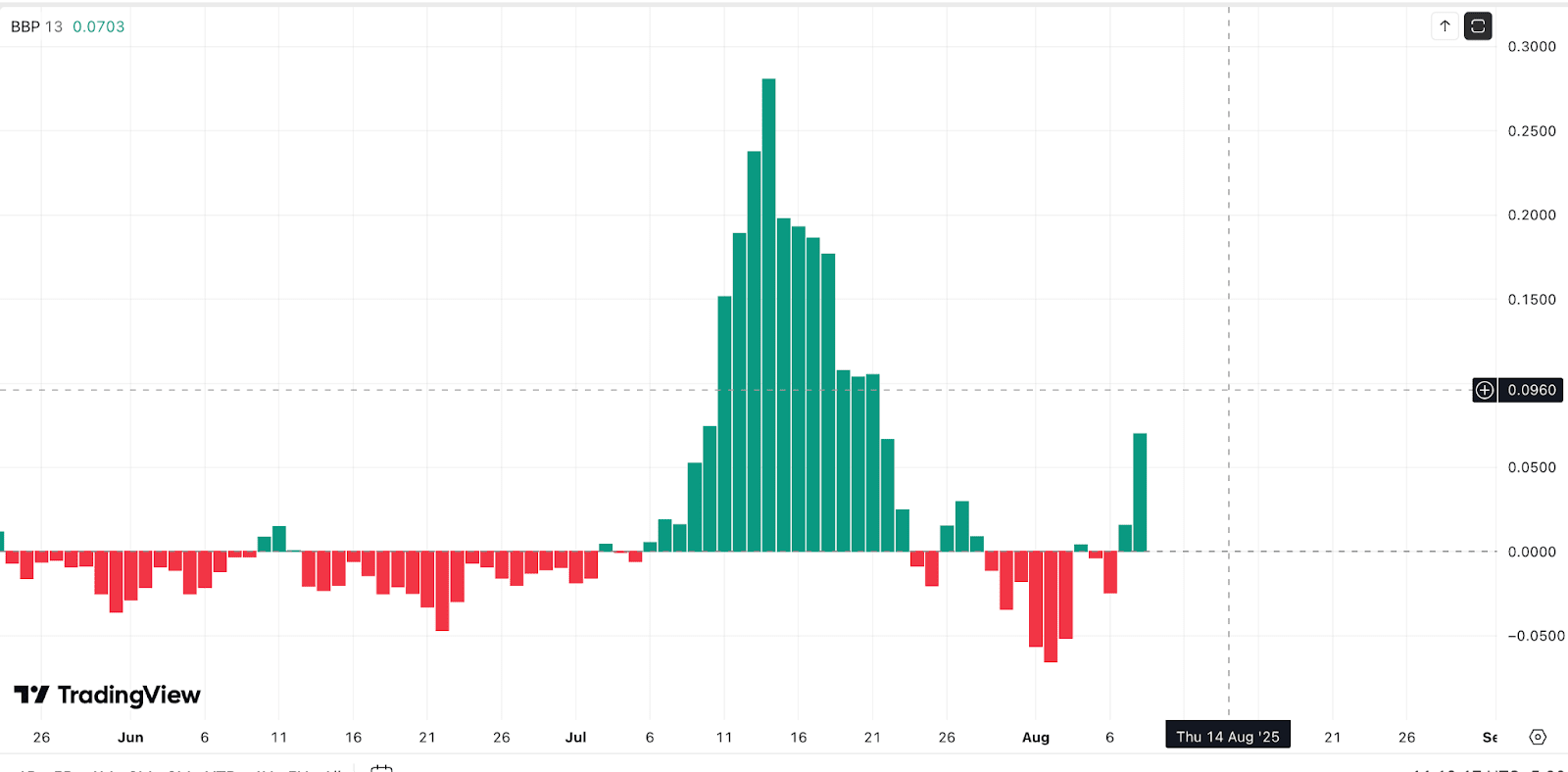
However, there is a reason to be cautious in trading. The net flow of funds to exchanges over the past 30 days has turned positive, increasing from below $1 million last week to over $9 million this week. This may indicate that more XLM is being transferred to exchanges, possibly for profit-taking.
Long positions are dominating, with the target price of XLM being $1.
According to the long/short ratio of Binance, nearly 60% of trading accounts are currently holding long positions in XLM. This indicates that bullish sentiment is increasing among retail investors.
Although not overly excessive, this is enough to support continued price strength, especially if institutions enter the market. As long as the price of XLM remains above $0.46 and investors maintain high trading volumes, a move toward $0.52 is feasible. Additionally, $0.60 and $1.00 remain potential breakout targets based on the extension of the flagpole.

However, the short-term setup will be invalidated if the price falls below $0.36, especially if net inflows continue to rise.